Note: This post contains some spoilery information about the films Kiki’s Delivery Service and Parasite, as well as major spoilers for Shirley Jackson’s short story “The Lottery.” Additional warnings will be provided closer to each instance of spoilers along with information for how far to skip ahead if you do not want to see them.
In recent years, I started to notice that many of the movies and books I really love would often receive fairly mixed reactions from the general public or people around me. The criticisms I most often see and hear: “open ending” and “nothing really happened.” Which was weird to me because I enjoy both these things, which reflect real life so much better. Frankly, I am no scholar of story or narrative, just a gal who happens to like books, so it didn’t really hit me what was going on until seeing many more conversations and putting the pieces together. As it turns out, the things I like most usually don’t follow a traditional western three-act structure of set-up, rising action, and resolution. It was quite the a-ha moment! As an Asian American who grew up on a lot of Japanese media, it made sense that my perception of stories might be a bit different from the general western audience. Here, I will discuss one such aspect of the non-western storytelling that I love so much: kishōtenketsu.
What Is Kishōtenketsu?
Kishōtenketsu describes a classic East Asian narrative structure. The word itself is Japanese, though the structure first originated in China, used in quatrain poetry known as jueju. Beyond poetry and storytelling, this four-part structure is used quite widely, such as in music or even in argument. In Japan, it is also a traditional construction of yonkoma manga. The word kishōtenketsu itself defines the four parts that make up the narrative structure it describes, combining the words for each: ki, shō, ten, and ketsu. Let’s dig into each of these four parts themselves.
Ki, or Introduction: This first part’s quite simple. As at the start of any story, we’re introduced to our main characters and settings.
Shō, or Development: Also pretty straightforward. Here, we learn more about the characters and setting we were introduced to in the ki. Often, nothing major really occurs, but we have an opportunity to build our understanding of the world.
Ten, or Twist/Change: The third act, or ten, is where things can get a tad tricky. While “ten” can translate to “twist”, you shouldn’t necessarily picture a big Sixth Sense–style Plot Twist™, which is why I like the translation “change” a little better. As opposed to a big, shocking twist, the ten is more of a change or catalyst in the story that, though often unrelated to the elements from the first two acts, impacts them in some fashion and leads the story to its conclusion. (Here ends the basic description of ten. Skip the following paragraph of examples and go straight to the description of ketsu to avoid possible spoilers for Kiki’s Delivery Service and Parasite.)
Ten is a bit complicated because it can encompass a lot. The “change” can be a literal change in circumstance (Kiki losing her magic in Kiki’s Delivery Service), a switch in perspective (like a sudden time jump or POV switch), or the introduction of a new element (the third family in Parasite). I personally believe it can also just represent a story’s progression in a direction the reader finds unexpected or odd (which we’ll talk about more below) without necessarily causing a huge impact on the characters, but that is necessary for the reader to understand the conclusion. A discussion of just ten could easily become an entire post on its own, but I’ll stop myself here. Instead, if you want more perspectives on it, here’s one examination of kishōtenketsu I found particularly great that also dives a little deeper into the Kiki example. And here’s a wonderful analysis of diversity in story forms, including kishōtenketsu with a deeper discussion of the Parasite example.
Ketsu, or Conclusion: Finally, we have our ketsu, or conclusion. This is the ending of the story, where the elements from the first two acts and the third act are reconciled in some way. What makes the ketsu different from the endings of traditional western narratives is that it doesn’t have to be a resolution with problems solved and bad guys defeated, but is simply an ending. Whether it is open-ended, whether our characters didn’t go through real development or growth, whether we realize nothing much actually happened at all, it doesn’t matter that much in kishōtenketsu (and is what, in my humble opinion, makes it great). What matters is that the various elements from the different acts of the story come together in a finale, as climactic or as muted as it may be.
Now that we’ve gone through an overview of kishōtenketsu, it should actually not be all that new of a format to many, even for a Western audience. Think of urban legends you’ve heard — they often, and very effectively, follow this structure.
Examining “The Lottery”
Next let’s take an even deeper look at kishōtenketsu by examining an actual story: “The Lottery” by Shirley Jackson. (Spoilers galore upcoming. I use this example because it’s one I believe many Book Riot readers would be familiar with already, but you can go ahead and skip all the way to the book recommendations portion of this post if you’d prefer to avoid the spoilers.)
Ki: It is June 27, and we are introduced to a small village that is holding its annual lottery as everyone gathers in the square at 10 a.m. Some children are collecting stones into a pile at the edge of the square.
Shō: Once all the villagers have gathered, the lottery begins. The lottery is conducted by Mr. Summers, who brings out a black box with slips of paper inside. Going through alphabetically, each of the men draws a piece of paper for his family, and once every family has a slip of paper, they all open them at the same time.
Ten: We learn that Bill Hutchinson has drawn the marked paper, and his wife Tessie begins to protest that the drawing was unfair. Despite her complaints, Mr. Summers continues with the lottery, this time reducing the number of papers to five for each member of the Hutchinson family to draw.
Ketsu: Tessie Hutchinson draws the marked paper and is subsequently stoned (presumably to death) by the other villagers.
As in our general discussion of kishōtenketsu, the ki and shō here are pretty self-explanatory. We are introduced to our setting and situation (a village holding a lottery), and we watch the events progress and develop along a pretty logical course (the process of the drawing of the papers). The ten here is a bit more subtle, as there is no real change or new element introduced to the story. But the reaction of Tessie Hutchinson does present a bit of a question. In the average reader’s understanding of a lottery, drawing the marked paper should mean winning, so Tessie’s negative reaction doesn’t really make sense and brings up a feeling of unease. Only once we reach the ketsu and learn what the lottery actually decides (as well as what the stones the children were collecting at the beginning were for) do all the pieces fall into place to give us a complete, albeit horrifying, picture.
Whew! Now that I’ve droned on for a good 1000+ words, let’s get to some recs!
Books that Use the Kishōtenketsu Structure
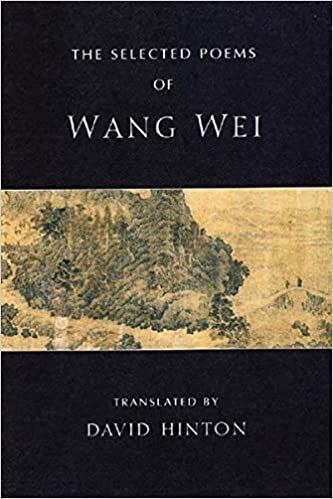
The Selected Poems of Wang Wei Translated by David Hinton
Wang Wei was a Chinese poet and painter who lived during the Tang dynasty, and is considered a master of jueju, the form from which kishōtenketsu originated. This collection curates some of his best nature poetry, including some of his jueju.

Sazae-san by Machiko Hasegawa
Sazae-san is a classic yonkoma manga that ran in the newspaper for almost 30 years, and is considered one of the foundational examples of the use of kishōtenketsu in the manga format. It follows Sazae, the quirky eldest daughter, and her family in their daily life in postwar Japan. The comedy and family shenanigans featured in the manga, as well as the Isono family’s happy and hopeful outlook even in the face of struggle, provided a ray of light in a very dark time for the country, and Sazae-san continues to be a widely beloved property to this day.
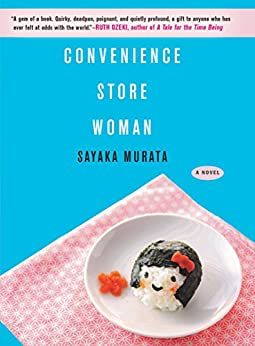
Convenience Store Woman by Sayaka Murata, Translated by Ginny Tapley Takemori
Keiko Furukura is a woman in her 30s who has spent her whole working life as a part-timer at a convenience store. Keiko has never really fit in with society, but working at the convenience store, where the rules are laid out explicitly in a manual, she has found a place where she can more or less blend in and be accepted as “normal.” But with her family and other people around her questioning her more and more about still being single and not having a “real” career, Keiko struggles with whether to live a life based on her own desires or on others’ expectations.
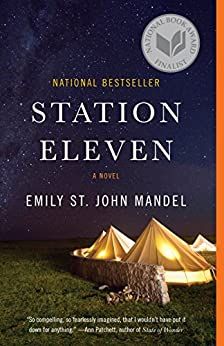
Station Eleven by Emily St. John Mandel
This post-apocalyptic novel follows a traveling troupe of performers who wander throughout the Great Lakes region performing Shakespeare and music in an effort to keep art alive in the wake of a pandemic that wiped out much of the global population. During their travels, they encounter a violent prophet who threatens their existence. This melancholic but beautiful book jumps across time, exploring the characters’ lives both before and after the downfall of society and revealing the delicately woven connections they have to each other.

The Hole by Hye-Young Pyun, Translated by Sora Kim-Russell
Oghi wakes up from a coma after a catastrophic car accident that has killed his wife and left him paralyzed. The horror begins here, as he reckons with the loss of control and use of his own body. He must rely solely on his mother-in-law, who is the only family he has left and becomes his caretaker, though she is herself grieving the loss of her only child. Oghi reflects on his life and marriage as he lies neglected in his bed and his world shrinks down to a single room. There is a tense foreboding that permeates through this novel as it uncomfortably explores the horrors of isolation and quietly builds to an ominous conclusion.
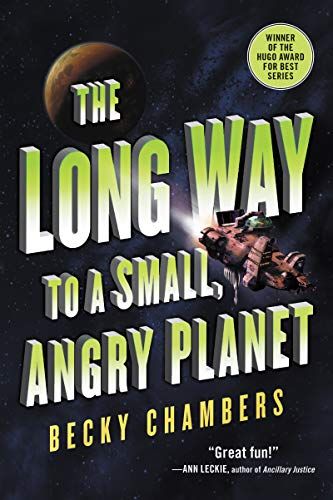
The Long Way to a Small, Angry Planet by Becky Chambers
In the first book of Becky Chambers’s acclaimed Wayfarers series, we are introduced to Rosemary Harper and the motley crew she joins, and follow them on their adventures throughout the galaxy. In contrast to the action-packed space adventures many sci-fi readers might be familiar with, this one is a quieter and slower story focused on its characters rather than a big, overarching conflict.
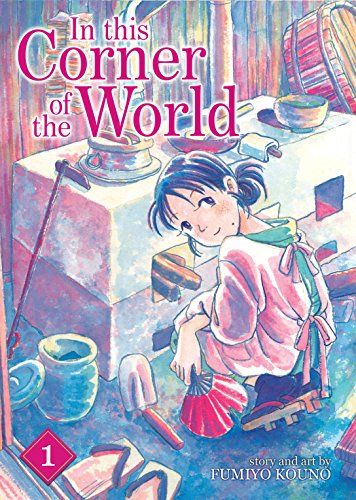
In This Corner of the World by Fumiyo Kouno
This slice-of-life manga depicts the daily experiences of ordinary Japanese people during World War II. It tells the story of Suzu, a young woman and artist who moves to the port city Kure from her hometown of Hiroshima to join her new husband’s family. There, Suzu and the people around her make their best efforts to get by amid the worsening conditions brought on by the war. With any historical knowledge, you can probably guess at least part of the ten of this one, but even without necessarily being unpredictable, this story still succeeds at being incredibly moving and effective. It is all at once a gentle, somber, and beautiful portrayal of human grace in the face of struggle and tragedy.
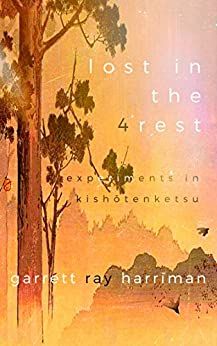
Lost in the 4rest: Experiments in Kishōtenketsu by Garrett Ray Harriman
This book is a short collection of 52 four-sentence stories that play with the kishōtenketsu structure. Not only could this be a good resource for readers looking for more bite-sized examples of the form, but may also be a good companion for writers also looking to experiment.
For more books that may use kishōtenketsu, or at least are similarly structured, check out these lists of Japanese books by women in translation and Korean fiction in translation. And, if the idea of stories that are less conflict-heavy appeals to you in general, explore some slow sci-fi as well!






